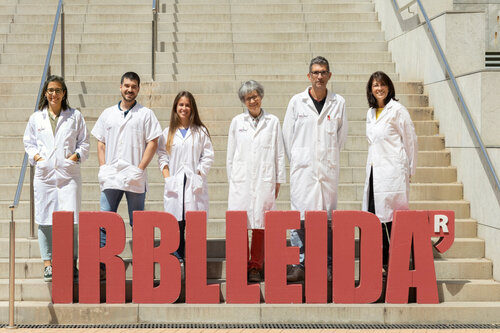A Lleida review of a research study opens the door to alternative mechanisms in the development of fatty liver disease
The Cell Signalling and Apoptosis research group at UdL and IRBLleida has argued that several of the key findings of Wang's study are not fully supported by the data presented
A review of research conducted by the Cell Signalling and Apoptosis research group at the University of Lleida and the Institute for Research in Biomedicine of Lleida (IRBLleida) has opened the door to alternative mechanisms for the influence of the EndoG gene in the development of fatty liver disease. A relevant finding because non-alcoholism-associated fatty liver disease is a prevalent pathology, which can lead to liver failure for which the mechanisms and, therefore, the treatments are currently unclear.
'This analysis opens an important debate on the role of EndoG and its involvement in lipid metabolism, highlighting the need for further research to understand its specific mechanisms,' explained the head of the research group and professor at the UdL, Daniel Sanchis. The study has been published in Nature Communications.
This research led from Lleida, with the collaboration of the Josep Carreras Leukaemia Research Institute and the Institute for Research in Biomedicine of Barcelona / University of Barcelona, arose from the publication of the article Cytoplasmic Endonuclease G promotes nonalcoholic fatty liver disease via mTORC2-AKT-ACLY and endoplasmic reticulum stress by Wenjun Wang and other researchers. The Cell Signalling and Apoptosis research group has argued that several key conclusions of Wang's study are not fully supported by the data presented.
The original paper proposes that the cytoplasmic output of the mitochondrial EndoG protein is essential for lipid metabolism, while the reviewers argue that several of the key findings have not been conclusively demonstrated. The Lleida researchers analysed lipid (fat) accumulation in mouse liver and heart samples, with a meticulous protocol for image preparation and analysis using confocal microscopy.
'The most plausible conclusion is that EndoG plays an important role in fat degradation and not in fat production as suggested by Wang et al. Moreover, its influence seems to depend on its function at the mitochondria and not on its output, and this effect varies according to the type of tissue in which it acts. This means that EndoG does not work in the same way in all tissues; its influence on fat may be different in the liver, adipose tissue and elsewhere,' Sanchis said. In addition, the researchers pointed out that the exact mechanisms through which EndoG exerts its influence have not yet been discovered.
This research has been made possible thanks to funding from the Ministry of Science, Innovation and Universities (PID2019-104509RB-I00, PID2022-139965OB-100 and PID2022-137576OB-I00) and the Agency for the Management of University and Research Grants (AGAUR) of the Government of Catalonia (2021_SGR_00758).
Reference article: Llovera M, Gouveia L, Zorzano A, Sanchis D. The effect

The Cell signalling and apoptosis group at UdL and IRBLleida






